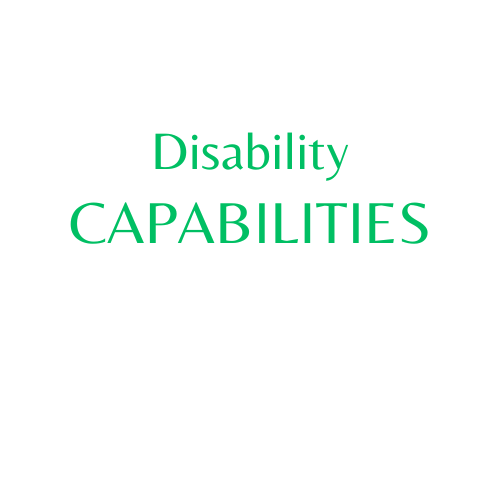Disability: Nature & Statistics

As advocates for persons excluded because of their disabilities, we are very vocal about the concept of discapability.
Discapability is a social construct resulting from how society treats disabled persons that prevents them from functioning in their area of greatest capability.
Nowhere is the social constructionist element of disability more pronounced than the area of “disability statistics”.
In general, disability is based on the norms and dominant trends recognized and accepted by a society or jurisdiction.
Global Divide in Disability Recognition
Developed countries generally have higher rates of recognized disabled persons than developing countries. Thus, in the United States, some 28.7% of the population is considered to be living with some disability[1].
In the European Union, some 27% of the population, or 101 million Europeans live with some form of disability[2]. And even for this, some countries record higher rates of disabilities than others. In Latvia, as many as 40% have a disability, while in Denmark, 36% identify they have a disability.
Developing countries tend to have a more conservative approach to recognizing disability. This is an admixture of socioeconomic limitations, the lack of advanced disability diagnosis systems, and a stronger informal system. Thus, most disabilities are managed privately on the level of the family. Then, there is the issue of the social climate which determines the extent to which behaviors and physical conditions are abnormalized. In a country where companies do not pay any benefits for disabilities on a job, they will not record any job-related disabilities (believe it or not, such countries exist!).
Brazil reports that 8.9% of the population have some disability[3]. In Africa, the numbers of disabled persons in the countries range from as low as 2% to 22%[4]. These are mainly estimates from African countries where some countries have no data on their disabled populations.
The World Health Organization (WHO) estimates that some 1.3 billion people live with significant disabilities. This is approximately 16% of the population and translates to 1 person in every 6 people[5].
Disability from Birth Versus Acquired Disability
Some people are born with disabilities and limitations. There are apparent physical disabilities that can be identified on sight at birth. And there are inherent bodily disabilities that are diagnosed as a baby grows.
And there are adjustment issues and situations that reveal specific disabilities inherent in people.
It is not easy to recognize and document disabilities that result from birth.
However, some scholars estimate that approximately 20% of disabilities are from birth[6]. That means that the other 80% of disabilities are considered to have been acquired.
Birth defects involve issues with the formation of a fetus as well as birthing complications among other things.
Acquired disabilities are caused by various conditions including:
1. Accidents
2. Health conditions like stress, stroke, or other changes in the body, and
3. Ageing (every country’s statistics for disabilities increase among populations aged 60 or more)
Availability of Clinical Psychological Diagnostic Services
One significant divergent factor in accounting for disabled persons is access to clinical psychological services.
Historically, recognition of mental and psychological issues as evidence in legal and formal settings was contested. Thus, the extent to which a country or society recognizes neurological and mental health dysfunctions as a disability varies.
On the individual, communal, and national levels, the tendency of a person identifying as disabled is linked to (1) the level of access to clinical psychological services, and (2) the level of recognition of such diagnoses.
This could account for the high level of diagnostic disparities between developed and developing countries (ranging from 40% in Latvia to as little as 2% in some African countries).
Also, there are age disparities in the recognition of psychological dysfunction as a disability. In most developed countries where priority was granted to early clinical diagnosis and treatment of psychological issues, younger people are likely to have a higher level of clinically diagnosed disabilities than older persons who grew up in generations where such disorders were not recognized.
Conclusion
Disability recognition and documentation is influenced by the dominant social and legal norms of a jurisdiction. Due to this, people in developed countries with advanced diagnostic services have higher rates of disability than people from developing countries where disability is often managed on an informal level. Disability is difficult to quantify due to the variations in symptoms and how they affect people. However, we know that most disabilities are acquired in the course of life while a significant number – about a fifth are acquired from birth. With the exception of a few disabled persons who need constant care, most disabled persons have capabilities they can leverage and use to serve their generations. As such, it is in society’s best interest to create a mechanism to identify the capabilities of each disabled person so it is integrated and applied to enhance the society in the most efficient way.
[1] Centers for Disease Control & Prevention. "Disability Impacts All of Us Infographic" CDC Disability & Health. Published: July 15, 2024. Available at: https://www.cdc.gov/disability-and-health/articles-documents/disability-impacts-all-of-us-infographic.html?CDC_AAref_Val=https://www.cdc.gov/ncbddd/disabilityandhealth/infographic-disability-impacts-all.html
[2] European Council. "Disability in the EU: facts and figures" Published: October 18, 2024. Available at: https://www.consilium.europa.eu/en/infographics/disability-eu-facts-figures/
[3] Irene Gomes. "Persons with disability have less access to education, work and income" IBGE. Published: July 7, 2023. Published: https://agenciadenoticias.ibge.gov.br/en/agencia-news/2184-news-agency/news/37319-persons-with-disability-have-less-access-to-education-work-and-income
[4] Mira Lilian Gupta, Raymond Kirwa, Simone Balog-Way & Mari Koistinen. "To improve disaster outcomes for persons with disabilities in Africa, disaggregate data" Prevention Web (Sourced from: The World Bank). Published: October 26, 2021. Published: https://www.preventionweb.net/news/improve-disaster-outcomes-persons-disabilities-africa-disaggregate-data
[5] World Health Organization. "Disability". Published: March 7, 2023. Published: https://www.who.int/news-room/fact-sheets/detail/disability-and-health
[6] Cara T. Mai, Jennifer L. Isenburg, Mark A. Canfield, Robert. E. Meyer. "National population-based estimates for major birth defects, 2010–2014" Birth Defect Research 111 (18) 2019 pp1420-1435





